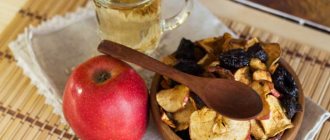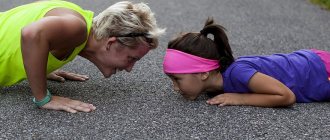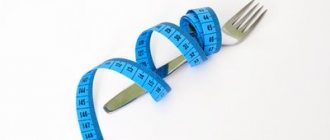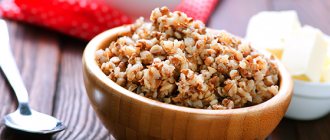February 16, 2011
During a period of active growth and hormonal changes, a child needs proper nutrition for good health and excellent appearance.
Adolescence is the time when a child strives for independence. Including in choosing what and when he will eat. But this choice does not always correspond to the principles of healthy eating. What a healthy diet should be for teenagers, says Zhanetta Gorelova, head of the laboratory of nutritional epidemiology at the Scientific Center for Children's Health of the Russian Academy of Medical Sciences.
General rules
In the era of the popularity of fast food, carbonated drinks and GMO products, the problem of obesity has become relevant not only for the adult population, but also for children, who tolerate excess weight much worse than adults. From a psychological point of view, it is more difficult for adolescents to cope with obesity , and excess weight at this age can be more destructive than in adulthood.
That is why the diet for teenagers involves a transition to a balanced, rational and light diet. A well-chosen diet is suitable not only for losing weight, but also for gaining weight. At the age of 12-17 years, the body is actively developing and growing, as a result of which adolescents experience an increased appetite and, as a result, a craving for bad eating habits. A lazy, sedentary lifestyle coupled with fast food, buns and chips can completely ruin your figure and even ruin your health. Therefore, it is so important that parents form habits in a timely manner and switch their children to a healthy diet: chips are replaced with dried fruits and nuts, and “fast food” is excluded.
A teenage diet for weight loss is very different from its counterparts for adults. She does not set a goal to lose the maximum number of kilograms in the shortest possible time. The weight will go away gradually due to the normalization of metabolism. The diet includes a complete set of proteins necessary for the growth of muscle tissue, and a set of carbohydrates for the complete restoration of energy reserves. The amount of fat in the diet is reduced. There will be exactly as much of it as the growing body requires. In addition, the diet menu must contain seafood rich in vitamins . Fermented milk products, but with a reduced percentage of fat (kefir, cottage cheese, milk, etc.), will also be useful. It is important to include vegetables and lean meats in your diet.
Difficulties losing weight
It would seem that everything is extremely simple, because the recipe for losing weight for a child consists of two ingredients:
- balanced diet
- physical exercise.
But in fact, the difficulties that parents face and the mistakes they make can turn this difficult task into an impossible one. Here are some of them:
Rush
Realizing the scale of the danger hidden behind extra pounds, some parents try to get rid of the problem as quickly as possible. Radical diets are used, designed to help the child “lose weight” in a short time. As a result, the fragile child’s body receives serious stress, while being deprived of essential microelements and vitamins.
Pressure
“From this day on, no more sweets or pies!”, “Stop eating, no one likes fat people,” “Why did you eat salad with mayonnaise when you were visiting? You know you can't! Do you want to go to the hospital? Don’t you want any injections?”, “You will get up at seven in the morning and do exercises until you lose weight!” - and these are not the harshest phrases that overweight children hear.
Acting as harsh overseers, punishing a child for not following the diet, creating psychological discomfort and mercilessly traumatizing the child’s psyche out of good intentions, many parents forget one very important thing: initially, children are deprived of choice. This means that they are not responsible for what they eat or how they look. In addition, in older children, weight problems may be the result of eating disorders caused by psychological distress.
Be that as it may, weight correction is an extremely difficult period for children of any gender and age; they need support, a friendly attitude, and not pressure, intimidation and censure.
Unjustified expectations
Having formed bad eating habits in a child, some parents mistakenly believe that changing them will not be so difficult. They are very surprised when a child, accustomed to getting fried potatoes and chocolate cake for an afternoon snack, does not express delight at the sight of figuratively chopped carrots and apple slices.
Some mothers who have experience losing weight and have changed their diet more than once do not understand why the child does not want to follow the recommendations for losing weight and breaks the diet at any opportunity, because they explained to him how important and necessary it is.
It's not a lack of willpower, it's that children lack motivation. Especially when it comes to children under adolescence. They don't need a slimmer waist for vacation, swim season, or to squeeze into a new suit or dress. Simply put, the child only understands that his candy was “taken away” and wants it back, but he doesn’t care about the reasons.
Children's manipulations
In many families, food becomes one of the tools for showing love and care. Food is used to comfort, encourage and pamper. It is always tasty and is very loved by the child, so when a child is faced with food restrictions and is deprived of sweet treats, he begins to ruthlessly manipulate the feelings of loved ones. Phrases such as: “You feel sorry for food for me!”, “You don’t love me!” are used! and so on.
Most often, parents, instead of showing strength of character and common sense, succumb to this kind of provocation and give in to their children’s desires, thereby aggravating the disease.
Bad example
The whole family eats crispy chicken wings with appetite, pouring fatty sauce mixed with ketchup over the steaming meat, and only little Misha is doomedly picking at a plate of steamed vegetables with a fork. “Eat, son, it’s very healthy! - Dad says with his mouth full and helps himself to another portion of chicken.
This picture is very common. Trying to instill in their child the basics of a healthy lifestyle, parents forget the importance of their own example.
Indications
Diets for teenagers should be aimed at limiting the entry of fat into the body and inhibiting its deposition around internal organs. Many teenage diets are “quick”; their essence is to urgently destroy fat deposits in the body by reducing the caloric content of the diet. The body of a teenager is not fully formed, and for the proper functioning of all organs and tissues, a certain ratio and amount of fats, proteins and carbohydrates are required. Therefore, such a diet should be based on a balanced and nutritious diet.
Authorized Products
Taking into account nutritional standards for teenagers, soups must be present on the menu. They can be cooked in meat broth without flour dressing or in vegetable broth. You can add eggs to soups. Consumption of cereals in the diet is limited. Oatmeal and buckwheat porridge are allowed for consumption; they can be consumed, but not often. It is recommended to limit spices and salt as much as possible.
Everyone knows about the benefits of seafood. An undeniable advantage is the lack of fat in them (scallops, seaweed, shrimp, squid). Seafood is rich in microelements (manganese, iodine, iron, magnesium, potassium) and B vitamins.
It is better to steam, boil, bake, stew food. During frying, a huge amount of fat is absorbed into the food, so this method of cooking is limited.
Table of permitted products
| Proteins, g | Fats, g | Carbohydrates, g | Calories, kcal | |
Vegetables and greens | ||||
| vegetables | 2,5 | 0,3 | 7,0 | 35 |
| greenery | 2,6 | 0,4 | 5,2 | 36 |
Fruits | ||||
| fruits | 0,8 | 0,3 | 11,5 | 56 |
Berries | ||||
| berries | 0,7 | 0,3 | 9,4 | 44 |
Mushrooms | ||||
| mushrooms | 3,5 | 2,0 | 2,5 | 30 |
Nuts and dried fruits | ||||
| nuts | 15,0 | 40,0 | 20,0 | 500 |
| candied fruit | 2,0 | 1,0 | 71,0 | 301 |
| dried fruits | 2,3 | 0,6 | 68,2 | 286 |
Cereals and porridges | ||||
| porridge | 3,3 | 1,2 | 22,1 | 102 |
| porridge on water | 3,0 | 0,6 | 18,5 | 91 |
| porridge with milk | 3,3 | 2,9 | 17,4 | 105 |
Bakery products | ||||
| crackers | 11,2 | 1,4 | 72,2 | 331 |
| Rye bread | 6,6 | 1,2 | 34,2 | 165 |
Confectionery | ||||
| jam | 0,3 | 0,2 | 63,0 | 263 |
| jam | 0,3 | 0,1 | 56,0 | 238 |
| jelly | 2,7 | 0,0 | 17,9 | 79 |
| paste | 0,5 | 0,0 | 80,8 | 310 |
Raw materials and seasonings | ||||
| ginger | 1,8 | 0,8 | 15,8 | 80 |
| honey | 0,8 | 0,0 | 81,5 | 329 |
Dairy | ||||
| milk | 3,2 | 3,6 | 4,8 | 64 |
| kefir | 3,4 | 2,0 | 4,7 | 51 |
| cream | 2,8 | 20,0 | 3,7 | 205 |
| sour cream | 2,8 | 20,0 | 3,2 | 206 |
| Ryazhenka | 2,8 | 4,0 | 4,2 | 67 |
| kumiss | 3,0 | 0,1 | 6,3 | 41 |
| katyk | 2,8 | 3,2 | 4,2 | 56 |
| yogurt | 4,3 | 2,0 | 6,2 | 60 |
Cheeses and cottage cheese | ||||
| cheese | 24,1 | 29,5 | 0,3 | 363 |
| cottage cheese | 17,2 | 5,0 | 1,8 | 121 |
Meat products | ||||
| beef | 18,9 | 19,4 | 0,0 | 187 |
| veal | 19,7 | 1,2 | 0,0 | 90 |
| mutton | 15,6 | 16,3 | 0,0 | 209 |
| rabbit | 21,0 | 8,0 | 0,0 | 156 |
| venison | 19,5 | 8,5 | 0,0 | 154 |
| horsemeat | 20,2 | 7,0 | 0,0 | 187 |
| lamb | 16,2 | 14,1 | 0,0 | 192 |
Bird | ||||
| chicken | 16,0 | 14,0 | 0,0 | 190 |
| chickens | 18,7 | 7,8 | 0,4 | 156 |
| turkey | 19,2 | 0,7 | 0,0 | 84 |
Eggs | ||||
| omelette | 9,6 | 15,4 | 1,9 | 184 |
| eggs | 12,7 | 10,9 | 0,7 | 157 |
Fish and seafood | ||||
| fish | 18,5 | 4,9 | 0,0 | 136 |
Non-alcoholic drinks | ||||
| mineral water | 0,0 | 0,0 | 0,0 | — |
| coffee | 0,2 | 0,0 | 0,3 | 2 |
| green tea | 0,0 | 0,0 | 0,0 | — |
| black tea | 20,0 | 5,1 | 6,9 | 152 |
Juices and compotes | ||||
| compote | 0,5 | 0,0 | 19,5 | 81 |
| juice | 0,3 | 0,1 | 9,2 | 40 |
| * data is per 100 g of product | ||||
Fully or partially limited products
To avoid digestive problems and make the diet as effective as possible, it is recommended to exclude certain foods from the diet.
Children's favorite hamburgers, cheeseburgers, french fries and any products from fast food restaurants are prohibited. Such dishes are prohibited not only because of their high calorie content, but also because of the accumulation of “bad” cholesterol on the walls of blood vessels, which negatively affects their elasticity and permeability.
You can't eat chips. They quickly satisfy hunger, cause dependence and addiction, contain a huge amount of calories, and negatively affect the functioning of the digestive tract.
Butter buns give you not only pleasant tasty moments, but also those hated extra pounds. This does not mean that you need to completely give up baked goods, but it is still better to limit your consumption of baked goods. It is better to eat the bread as toast or lightly dry it.
The teenage body needs fast carbohydrates, the source of which is sweets. If possible, it is better to limit them, especially if you have a sedentary lifestyle. The same goes for sweet carbonated drinks. It is better to replace them with freshly squeezed juices or plain still water. Store-bought juices from boxes are prohibited.
Table of prohibited products
| Proteins, g | Fats, g | Carbohydrates, g | Calories, kcal | |
Snacks | ||||
| potato chips | 5,5 | 30,0 | 53,0 | 520 |
| banana chips | 2,3 | 33,6 | 50,7 | 519 |
Bakery products | ||||
| baguette | 7,5 | 2,9 | 51,4 | 262 |
| pita | 8,1 | 0,7 | 57,1 | 274 |
| pita | 7,4 | 0,8 | 49,9 | 242 |
| Arctic cod | 7,9 | 9,4 | 55,5 | 339 |
Confectionery | ||||
| candies | 4,3 | 19,8 | 67,5 | 453 |
| cake | 3,8 | 22,6 | 47,0 | 397 |
| halva | 11,6 | 29,7 | 54,0 | 523 |
Ice cream | ||||
| ice cream | 3,7 | 6,9 | 22,1 | 189 |
Cakes | ||||
| cake | 4,4 | 23,4 | 45,2 | 407 |
Chocolate | ||||
| chocolate | 5,4 | 35,3 | 56,5 | 544 |
Raw materials and seasonings | ||||
| mayonnaise | 2,4 | 67,0 | 3,9 | 627 |
| sugar | 0,0 | 0,0 | 99,7 | 398 |
| salt | 0,0 | 0,0 | 0,0 | — |
Meat products | ||||
| pork | 16,0 | 21,6 | 0,0 | 259 |
| salo | 2,4 | 89,0 | 0,0 | 797 |
| bacon | 23,0 | 45,0 | 0,0 | 500 |
| ham | 22,6 | 20,9 | 0,0 | 279 |
| raw smoked pork belly | 7,6 | 66,8 | — | 632 |
| smoked-baked pork loin | 10,2 | 48,2 | — | 457 |
Alcoholic drinks | ||||
| vermouth | 0,0 | 0,0 | 15,9 | 158 |
| whiskey | 0,0 | 0,0 | 0,4 | 235 |
| vodka | 0,0 | 0,0 | 0,1 | 235 |
| cognac | 0,0 | 0,0 | 0,1 | 239 |
| liquor | 0,3 | 1,1 | 17,2 | 242 |
| beer | 0,3 | 0,0 | 4,6 | 42 |
| moonshine | 0,1 | 0,1 | 0,4 | 235 |
| tequila | 1,4 | 0,3 | 24,0 | 231 |
| schnapps | 0,0 | 0,0 | 4,0 | 200 |
Non-alcoholic drinks | ||||
| sprite | 0,1 | 0,0 | 7,0 | 29 |
| tonic | 0,0 | 0,0 | 8,3 | 34 |
| Fanta | 0,0 | 0,0 | 11,7 | 48 |
| energy drink | 0,0 | 0,0 | 11,3 | 45 |
| * data is per 100 g of product | ||||
Proper nutrition for teenagers (Menu and meal plan)
A healthy diet requires 4 meals a day.
Breakfast
The very first and most important meal of the day. Must include proteins and carbohydrates. It is better to give preference to buckwheat and oatmeal, omelette, fresh fruits and vegetables. Cooking breakfast in a hurry is not allowed; the menu must be thought out in advance, because breakfast gives you a boost of energy for the whole day. Everything that is eaten in the morning is consumed by the body during the day and is not stored in fat reserves.
Dinner
The second meal must contain hot dishes. It is better to give preference to soups. Broths allow you to avoid problems with digestion and excess weight.
Afternoon Tea and Dinner
Food for the final two meals should be light in calories. Preference is given to dairy products, vegetables, fruits, fish, steamed meat (no more than 200 grams).
When and how much?
Ideally, a teenager should eat four times a day
, but not all children want to follow such a regime.
The parents' task is to ensure that food is taken on time. A teenager's breakfast should provide 25 percent of daily energy needs, lunch - 35-40 percent, afternoon snack - 15, and dinner - 20-25 percent. Breakfast, lunch and dinner must be hot
. In addition, it is advisable that the teenager eat at least three servings of dairy products per day, including milk porridge or cottage cheese casserole. And fresh vegetables or fruits should be included in every meal and become an independent snack - instead of chips or candy.
Sample menu for the week
Monday
| Breakfast |
|
| Dinner |
|
| Afternoon snack |
|
| Dinner |
|
Tuesday
| Breakfast |
|
| Dinner |
|
| Afternoon snack |
|
| Dinner |
|
Wednesday
| Breakfast |
|
| Dinner |
|
| Afternoon snack |
|
| Dinner |
|
Thursday
| Breakfast |
|
| Dinner |
|
| Afternoon snack |
|
| Dinner |
|
Friday
| Breakfast |
|
| Dinner |
|
| Afternoon snack |
|
| Dinner |
|
Saturday
| Breakfast |
|
| Dinner |
|
| Afternoon snack |
|
| Dinner |
|
Sunday
| Breakfast |
|
| Dinner |
|
| Afternoon snack |
|
| Dinner |
|
How to create a healthy menu for every day with calorie calculations: recommendations for the week
When you plan your child's diet, take into account his daily routine.
The principles of creating a weekly menu with proper nutrition are simple. An approximate diet for each day can be oriented according to the table:
| Breakfast | Main course - 300 g, drink - 200 ml. Options: porridge with milk, cottage cheese or dishes made from it, omelet. You can supplement this food with vegetables, fresh or dry fruits, lean meat, and homemade sauce. |
| Dinner | 250 mg liquid food, 100 g vegetable salad, 300 g main dish, 200 ml drink. |
| Afternoon snack | Fermented milk products, fruits, cookies. The serving size is 100 g, you can wash it all down with 200 ml of drink. |
| Dinner | Main course - 300 g and 200 ml of drink. Examples of food: cottage cheese baked goods, egg or fish dishes, porridge with vegetables. |
Bread can be consumed during every meal. It is better to give preference to a whole grain product.
Important! The correct diet for a teenager should be based on calories. The daily calorie menu for girls is 2500 kcal, and for boys - 3000 kcal. Within 24 hours, children should consume 30% fat, 20% protein, 50% carbohydrates.
Recipes
Ratatouille
Ingredients:
- eggplant;
- zucchini;
- small potatoes 3 pcs.;
- 3 tomatoes;
- tomato paste 2 tbsp. spoons;
- sour cream 200 g;
- liter of water;
- spicy herbs, pepper, salt.
Recipe
Preheat the oven to 180 degrees. Peel all the vegetables, leaving the zucchini untouched. Cut everything into rings no more than 10 mm thick. Place all the vegetables in a tall baking dish with high sides, alternating them: zucchini - potatoes - eggplant - tomato. Next, start preparing a mixture of sour cream, tomato paste and water. Pour the resulting mixture over the vegetables. Season with salt and pepper to taste, adding herbs. Keep in the oven until done, about 30 minutes. Sprinkle the dish with herbs and cheese before serving.
Apples baked with cottage cheese
Ingredients:
- large apples 4 pcs.;
- cottage cheese 2 packs;
- sugar 4 tbsp. spoons;
- dried fruits.
Recipe
Place cottage cheese in a bowl and mix it with sugar. Wash thoroughly and finely chop the dried fruits, then mix with cottage cheese. You need to cut off the tops of apples, carefully clean the middle and fill the cavity with a filling of cottage cheese and dried fruits. Place the filled apples in an oven preheated to 180 degrees for 7 minutes. Serve the dish warm.
Crab stick salad with avocado
Ingredients:
- crab meat or crab sticks;
- 1 lemon;
- 1 avocado;
- low-fat mayonnaise;
- half a medium onion.
Recipe
Peel and cut the avocado into small cubes, sprinkle with lemon juice. Chop the onion and crab sticks. Mix all ingredients and season with low-fat mayonnaise. As a dressing, it is better to use a self-prepared mixture of mayonnaise and sour cream to give the dish a light and delicate taste.
Quitting the diet
A smooth exit from the diet is recommended. In general, a teenage diet implies a balanced and proper diet, which you should try to adhere to constantly. Therefore, when leaving the diet, you can sometimes allow yourself your favorite dishes, but try to correct your weight through physical activity if there are errors in your diet. You can accustom yourself to a different pattern: you eat forbidden foods, and the next day you deload on a completely healthy menu (fruits, vegetables, dairy products, seafood, chicken eggs).
Also, upon completion of the diet, it is important to ensure that the teenager has a full breakfast and at least two meals, the volumes of which need to be controlled. Physical activity and adequate water regime are required to normalize metabolism. Try to give up fast food, sweets, baked goods, processed foods, pasta, salty and fatty foods. Avoid French fries, crackers, chips, candy bars like Snickers and Mars, energy drinks and soda.
Advantages and disadvantages
| pros | Minuses |
|
|
Features of a rational menu for excess weight
When the BMI (body mass index in kg to height in m²) of a teenager is above 25-30 kg/m², then he needs to adjust his diet. To do this, you should give up chips, chocolate bars, fatty, fried foods, fast food, sausages, store-bought sauces, etc.
Daily calorie intake should be reduced by 10-20%. In addition, the teenager must do physical exercise.
If you are obese, it is better to eat at home; the main part of the diet is boiled, stewed, steamed, baked (without oil) food. Replenish the menu with vegetable broth soups, water-based porridges, low-fat dairy products, dietary meat, fish, and egg whites.
You should limit the amount of potatoes, pasta (class A), and sweets. They can be included in the menu no more than 2 times in 7 days.
To lose weight faster, you need to exercise at least 2 times a week for 1-2 hours. This could be running, cycling, gymnastics, etc. For more information, see the article about recommended exercises for losing weight for a teenager.
Important Terms
- try to completely avoid salt, pepper and spices;
- prepare juices yourself from fresh fruits;
- Steam the meat.
To start the weight loss process, a teenager’s daily caloric intake should be reduced by 20%. For girls - 2500 kcal, for guys - 2700. This figure can be reduced by 20%, but no more, otherwise problems with the health of the growing body will begin. For a teenager to grow, preference in the daily diet should be given to healthy carbohydrates (vegetables, cereals, fruits). Also important is the frequency and regularity of food intake. It is advisable to eat at the same time, without skipping meals. Frequency – 4 times a day.
It is better to bake dishes in the oven, steam or boil them. Completely avoid fried and fatty foods. Adequate physical activity will not only strengthen and shape muscles, but will also speed up the fat burning process. Effective exercises for girls are dancing and swimming. For boys - football, running, team games.
By following these simple rules, you can really lose weight without health problems. Extra pounds will go away naturally, without stress to the body.
Rules for losing weight for teenagers
Modern youth are very dependent on ideal forms. Teenagers try with all their might to comply with them, without realizing how they are gradually worsening their health condition. It is important to know all the information about proper weight loss for teenagers , various diets and the causes of obesity. Only then can you achieve the desired results without causing damage to the body.
Why is a teenager overweight?
There are several reasons:
- hormonal surge or change. Typical for girls 11–14 years old. Due to hormonal changes in the body and puberty, a girl may gain excess weight. The most common areas where it is deposited are the hips and waist. In boys, this process occurs later, but fat mass hardly accumulates;
- lack of physical activity. Although teenagers are very active, this may not be enough to burn all the calories. It is necessary to reconsider both the composition and norms of nutrition and the distribution of physical activity.
Is it worth it and can a teenager go on a diet?
Some parents have this question: “Will diet harm a growing body?” Girls and boys from 10 to 18 years old are strictly prohibited from going on calorie-reduced diets. After all, during this period the body grows, develops, and various hormonal changes occur. A strict diet is the enemy of these important points. A teenager can use light and fast diets.
Adolescents with morbid obesity need special diets
Tips for normalizing weight
- It is necessary to eat fresh, low-calorie food according to a certain regimen (at least three full meals and two snacks a day).
- Balance your teenager's evenly. Distribute the amount and timing of food intake over time.
- Avoid drinking sugary drinks with carbonated water. They need to be replaced with purified water that does not have gas.
- Review the distribution of physical activity. Take the stairs instead of the elevator or go outside with friends school
- Make an appointment with a pediatrician. The possibility of some disease leading to excess weight cannot be ruled out.
- Parents must definitely support their teenager . In this difficult period, it is they who provide the help, the support that a losing weight body needs (from a psychological point of view).
- Many teenagers drink alcohol and smoke. These bad habits need to be fought.
Quick weight loss for a teenager
Losing weight quickly is not always right. It is better for a child to lose weight slowly and gradually. Is it possible to lose weight without risk of harm to health? Yes, if you exclude sweets, fatty foods and starchy foods from your diet. These products can be replaced with light, homemade food.
It is necessary to add timely physical activity to proper nutrition. It is worth signing up for a sports club, swimming or dancing, and also not missing physical education lessons. The most popular fast diets among teenagers :
- "fruits and berries". The diet helps you lose excess weight thanks to natural, fresh fruits and berries. Fruits that have an advantage: pears, cherries and peaches. You should avoid bananas due to their high sugar content;
- buckwheat-kefir. Buckwheat must be poured with boiling water and allowed to brew. After 3–5 hours, add kefir and consume.
Easy diets for teenagers
This method will help a teenager without strict dietary restrictions. You will have to eliminate sweets, baked goods, fatty, overly salty and processed foods from your diet.
It is necessary to organize 4 meals at which you can eat healthy food. The serving size per person is 300 grams + drink (fresh juice or compote). The last meal should be 3 hours before bedtime.
Losing weight as a teenager is much easier than it seems. The main thing is to understand the reason and immediately begin to solve it.
Recommendations from nutritionists
Nutritionists help create a healthy diet for teenagers. Teenagers are recommended to eat 4 meals a day with food distributed according to total calorie content throughout the day:
- breakfast – 25%;
- lunch – 40-50%;
- dinner – 15-20%.
The daily diet should be composed so that the ratio of proteins, fats and carbohydrates corresponds to the scheme 1:1:4. Thus, the diet should contain 4 times more carbohydrates than proteins and fats.
A teenager’s daily food intake table allows you to independently calculate the total calorie content for the day and the distribution of proteins, fats and carbohydrates. Compiling a teenager’s diet, table:
| Diet | Name of the dish | Products necessary for its preparation | Weight, g | Squirrels | Fats | Carbohydrates | Calorie content, kcal |
| Breakfast | |||||||
| Dinner | |||||||
| Afternoon snack | |||||||
| Dinner |
Reviews and results
Vlada, 15 years old: “... At school they teased me and called me “fat”, they constantly found fault with me about this, and the boys never stood up for me, and did not even look in my direction. I didn’t even want to go to school, I was looking for excuses, either a fever or a stomach ache... I tried different diets, but my willpower didn’t allow me to exhaust myself, and I didn’t see any results. I looked for information on the Internet and consulted with my mother. We decided to try the teenage diet. My mother’s nutritionist helped me create a daily diet. I liked proper nutrition, I didn’t have any pain, and I didn’t feel hungry. In the evenings, I started walking, and then switched to light jogging. After just 2 weeks I became 5 kg lighter. In six months I managed to get rid of 15 extra pounds, I became thinner, my complexion improved, and my self-esteem rose.”
The diet is well tolerated, forms the right habits, improves health, improves immunity, and allows you to get rid of excess weight without harm to the growing body. The diet does not have a strict time frame; it can be followed for a long time.
Do you need to take into account what your child eats at school when preparing home-cooked meals?
The ideal would be to receive the school menu in your hands and prepare home-cooked meals based on this information. But in most cases this is not possible. Therefore, parents have to move blindly. But you can always talk to your child and find out what they served for lunch at school and adjust as you go.
—Ask him what he eats from the school menu and write it down. There is often a situation where a child eats one or the other. For example, “I eat breakfast, I don’t eat lunch.” “I eat buckwheat, but the cutlet is not tasty.” Or “I’m eating sausage, but the pasta is stuck together in a lump.” “I drink tea, but don’t eat bread - I’m on a diet.” This information, firstly, will help you get to know your child better - this is never superfluous. You will learn about his taste preferences: what he recognizes and what he does not. And based on this data, you can adjust your home menu so that the overall diet is complete and balanced. For example, if you notice that a child categorically refuses to eat meat at school, add it to the home menu. Don’t count on him ever eating anything there,” says Irina Pyshnaya.










